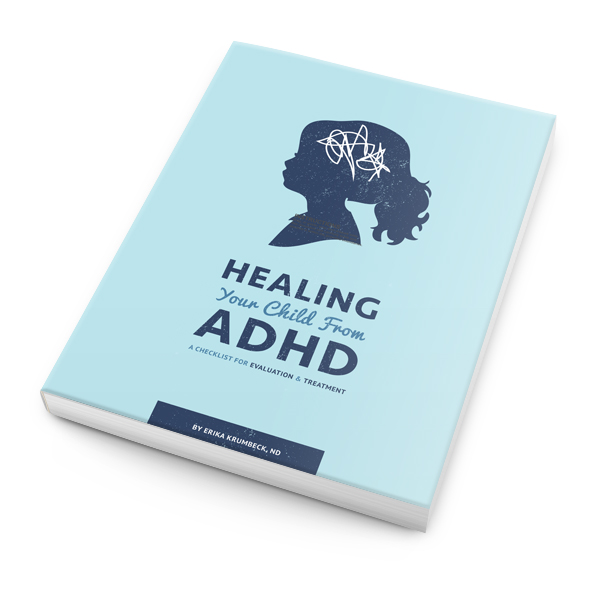
Pathological Demand Avoidance: An Unrecognized, Important Subtype of Autism
Have you ever seen a child in your clinic who presents as “a little autistic, but not quite”? Perhaps nine-year-old Anna* makes good eye contact, speaks eloquently, and greets you like a talkative “little adult,” but, when you ask her if she has a best friend, she ignores your question and instead ruminates for ten minutes about a specific peer who bullied her in preschool. Maybe her parents report that Anna is impeccably-behaved in public, but begins swearing and throwing things at her sister as soon as she gets home from school, sometimes for hours at a time. After her tantrums end, she typically retreats to her room to obsessively organize her stuffed animals and refuses to come down for dinner unless her parents refer to her as Hermoine from Harry Potter. If they don’t knock on her bedroom door three times and invite “Hermoine” to dinner, Anna will remain in her room without eating, and ignore them until the following morning.
OCD, ASD, ODD, Anxiety?
Utterly perplexed by this seeming mix of contradictory traits, you wonder if Anna might have Obsessive Compulsive Disorder (OCD), or maybe mild Autism Spectrum Disorder (ASD), so you refer her for psychological testing. The psychologist who tests her concludes that Anna’s social communication skills seem neurotypical, so ASD is quickly ruled out. She concludes that Anna is gifted and that her tantrums at home are related to being bored all day at school. Anna does not meet criteria for OCD despite being an obsessive thinker (her obsessive thoughts are not linked to compulsions, and they seem to calm rather than impair her). Her mother is crestfallen with the test results, as she just wants a name for what is happening and to find a way to stop her daughter from keeping the entire family hostage with her moods. On your end, you don’t think a Generalized Anxiety Disorder diagnosis truly explains the complexity of Anna’s struggles. You feel lost and unsure of how to help. Most importantly, you’re sure that you’re missing something.
As a clinical psychologist, the first client I had who fit a profile like Anna’s was Colin,* a 14-year old school refuser who was prone to explosive mood swings and meltdowns that seemed to come out of nowhere. His outbursts only occurred at home. Colin’s parents had drilled manners into him, and he was polite and quiet in public. Although he insisted that he wanted to go to school, some days, he couldn’t get out of bed; if he did get out of bed, he’d sometimes have an hour-long panic attack in the car and couldn’t make it in to the school. Other days, he’d make it inside but call his mom after two class periods, complaining that his stomach hurt so badly that he needed to come home. At home, he spent all his time playing video games in his room by himself. He had a best friend whom he didn’t see often, and otherwise didn’t seem interested in socializing. If his parents asked him to clean his room, he’d fly into a rage and destroy it beyond recognition.
When Colin walked through my door in 2016 for a psychological evaluation, he’d already received two previous psychological evaluations. One ruled out ASD, while the other suggested that his struggles were likely due to a learning disorder, ADHD, and Oppositional Defiant Disorder (ODD). His therapist had recommended that Colin’s parents employ strict boundaries with him, as well as behavioral consequences for defiance. However, he was always in trouble, and parenting him with a heavy hand seemed to make his rage worse. His psychiatrist prescribed Colin a mood stabilizer and diagnosed him with Unspecified Bipolar Disorder, but the meds did not help. Colin continued to display intense mood swings and irritability without any classic depressive or manic symptoms or episodes, and his mood swings occurred only at home. His parents felt helpless by the time they came to see me, fearing that Colin would never return to school, graduate, leave their house, get a job, or be able to have “normal” relationships.
Pathological Demand Avoidance (PDA) is not the same as Oppositional Defiant Disorder
After completing exhaustive amounts of testing, I, too, had no idea how to characterize Colin’s struggles. But because he displayed subtle social communication difficulties, was very rigid, and seemed more avoidant than defiant, I wondered if he might have some type of Autism. I dove deep into the Autism research literature in hopes that it might yield an answer. Fortunately, it did: the most fitting diagnosis for Colin was one I’d never heard of or learned about in graduate school, but which was diagnosed and treated fairly regularly in the U.K.: it was called Pathological Demand Avoidance (PDA).
Quickly, I learned that PDA is different than ODD, as kids with ODD refuse to complete tasks because they don’t want to, while kids with PDA often want to complete tasks but feel that they sometimes can’t. Thus, the PDA tagline that was coined in 2015 by Jane Sherwin, a mother of a child with PDA: “Can’t/Help/Won’t” – “I can’t help it, I won’t do it” – seemed like the perfect fit to describe Colin’s struggles. But looking at him through the lens of Autism would be a tough sell for his treatment team, who were convinced that he was just a naughty child with overly permissive parents.
Research in the field of Pathological Demand Avoidance
Information about PDA is just now making its way to the U.S. mental health community, although the first mention of PDA-like behavior originated in the Autism literature in 1926. At that time, the Russian child psychiatrist Grunya Efimovna Sukhareva, who coined the term “infantile autism”, also published descriptions of children with autistic traits and concurrent “pathological avoidant psychopathy” in a German psychiatry and neurology journal. PDA wasn’t mentioned in the psychology literature again until the 1980’s, when Dr. Elizabeth Newson of University of Nottingham observed children with similar profiles in her child development clinics. Over time, Dr. Newson identified a group of 150 children with demand avoidant traits who seemed more autistic than neurotypical, although their clinical presentations did not quite “fit” within the categories for autism at the time (Asperger’s Disorder, Autism, and Pervasive Developmental Disorder Not Otherwise Specified).
The thorough research and clinical work of Dr. Newson and her colleagues eventually led to greater recognition of the PDA profile in the U.K., and to the development of the PDA Contact Group in 1997 (now known as the PDA Society U.K.), to the 2013 publication of the Extreme Demand Avoidance Questionnaire (EDA-Q), a screening measure for PDA by O’Nions et al., to the creation of a few schools and treatment approaches designed to treat this population, and to several books, videos, podcasts, and in 2020, to the first conference on PDA in Chicago, and to the development of the PDA North America website.
Is PDA related to ASD, or is it more similar to other disorders?
According to Newson, the defining feature of PDA is “an obsessional avoidance of the ordinary demands of life coupled with a degree of sociability that allowed social manipulation as a major skill” (Newson et al., 2003, p. 595). Both in 2003 and currently, the notion that children on the autism spectrum are robust-enough in their use of social skills in order to manipulate social situations for their own gain has been/is still the subject of great disbelief within the mental health community. Thus, many psychologists and psychiatrists who are aware of PDA do not feel it is best categorized as a form of ASD, believing that it is better labeled as an anxiety disorder, attachment disorder, personality disorder, or ODD. However, O’Nions et al. (2013, p. 2) explained it best: “Unlike ASD, children with PDA are said to use socially manipulative avoidance strategies; and unlike ODD, they resort to extreme, embarrassing or age-inappropriate behavior” that is not neurotypical in order to get their needs met.
PDA and social skills
Interestingly, the appearance of relatively savvier social skills seen in PDA’ers actually seem to be related to their obsessive thinking and tendency to hyperfocus, which are decidedly Autistic traits. The obsessive interests of the child with PDA are much more often social than object-oriented in nature (i.e., they are more likely to become obsessed with a best friend or a celebrity that they want to emulate vs. obsessively categorizing species of dinosaurs). PDA’ers often study people the way Aspies study dinosaurs. For example, Anna would spend hours observing her sister as she played so that she could learn how to more effectively “push her buttons” later (PDA-related social obsessions can be either positive or negative in their hyperfocus towards a certain person). Thus, although the social skills of a child with PDA at a surface level seem strongly developed and neurotypical in nature, this is often because of masking and mimicking. After spending more time with these kids, it is evident that they do struggle (although sometimes subtly, like girls with traditional ASD) with multiple types of social demands. These can but don’t always include keeping friends, maintaining conversations that are spontaneous, lengthy, authentically reciprocal, or unscripted, engaging authentically as themselves rather than a “character”, and understanding other people’s perspectives, amongst other traits.
Like other children with ASD, PDA’ers often display poor reciprocity and lack interest in, or difficulty understanding or relating to, other people’s experiences. They display sensory sensitivities and repetitive behaviors and interests, and extreme cognitive rigidity. They often have a stronger ability than those with traditional ASD to engage in symbolic and imaginative play, and they often avoid demands through engagement in role play or fantasy (i.e., playing a character, as they have often extensively studied how that character talks, thinks, and reacts).
Other features of PDA – anxiety, moodiness, avoidance and a deep need to control
Children with PDA display other several distinct features: like Colin, they are prone to intense mood swings and anxiety. They have a strong need to control other people or the environment (again, often through engagement in shocking or outrageous behavior, although sometimes through extremely avoidant behavior). They have subtle difficulty with long-term, deeper engagement in relationships, and they seem to lack a sense of a non-role-played identity.
Over time, clinicians and individuals with PDA have described one of the central traits of PDA as being an anxiety-based need for control. This need for control, and the resulting flood of anxiety in response to it, is most often is triggered by demands, whether explicit (“Clean your room”) or implicit (that you are supposed to start dating in high school, attend school, or answer questions like “How are you?” in a non-authentic, scripted way in order to please others). Although demand avoidance is a human trait we all share, it becomes pathological when it causes distress or functional impairment. Thus, 70% of kids with PDA do not attend school. Many cannot hold jobs unless the job is in a specialized area of interest, and when they do, it can be excruciating for them to have a boss who tells them what to do if they don’t respect that person or agree with the rules. The anxiety that drives PDA can make interpersonal interactions fraught and volatile, as the people around them often feel that they have to “walk on eggshells,” which can feel difficult, one-sided, and exhausting.
As anxiety appears to drive the demand avoidance, complicated, of course, by a lack of understanding or perhaps agreement with social demands, it has been suggested that PDA may be the result of highly sensitive neuroception (Matthews, 2019). The concept of highly sensitive neuroception was first introduced by psychologist Stephen Porges as part of polyvagal theory. Polyvagal theory suggests that the vagus nerve is strongly linked with a person’s fear response, as well as their ability to regulate emotions and engage in social connection.
In relation to PDA, this theory suggests that demands might be perceived by the PDA’er’s nervous system as a threat to their survival, leading them to respond by fighting, fleeing, freezing, flopping, or fawning in order to find a way to re-regulate and calm down. Although children with PDA usually want to comply with most demands (if they are reasonable), their bodies literally can’t allow them to complete them when they are on other people’s terms and timelines.
Diagnosing PDA
Currently, the nosology of the DSM-V and ICD-10 leave no room for PDA, as the category of Pervasive Developmental Disorder NOS (PDD NOS) is now defunct, and since these manuals have deflated the autism spectrum down to a three-point continuum that is based on functional impairment criteria rather than specific subtype criteria. Of course, there is a growing movement to view Autism as neurodivergence rather than as a “diagnosis,” with Autistics preferring the term Autism Spectrum Condition to ASD, and “people with PDA” preferring the term “PDA’ers” instead, as both labels utilize person-first identity terminology to describe neurodivergent people in a more positive and less pathological light.
However, “missing PDA” as a diagnosis or misdiagnosing PDA as something else can be hugely detrimental to PDA’ers, who typically respond in the opposite way as children with traditional ASD to structure, rewards, and consequences, whose defiance is not a choice but rather an anxiety-based response, and whose anxiety is complicated by social communication deficits, extreme rigidity, and a need for control.
For clinicians like myself who are seeing increasingly neurodivergent and challenging kids in my practice, finding PDA as a diagnosis has served as “a lightbulb moment” in my understanding of the diversity of the Autism spectrum. Now, when my referrals include descriptions of kids as school refusers, somaticizers, or young adults who have failed to launch, I wonder if what I am seeing is PDA, hiding in plain sight.
References:
Matthews, J. (2019). Highly sensitive neuroception may be at the heart of PDA. Published online at https://pathologicaldemandavoidanceaprofileofautism.com/2019/06/25/pda-neuroception-the-five-fs/?fbclid=IwAR2U5t7zHBC6z2zSeFxEGT4Cwi68soQ-DBW4LdashPvOReCKHFTTEow8Tb4
Newson, E., Le Maréchal, K., and David, C. (2003). Pathological demand avoidance syndrome: A necessary distinction within the pervasive developmental disorders. Archives of Disease in Childhood, 88(7): 595-600.
O’Nions, E., Christie, P., Gould, J., Viding, E., and Happé, F. (2013). Development of the Extreme Demand Avoidance Questionnaire’ (EDA-Q): Preliminary observations on a trait measure for Pathological Demand Avoidance. Journal of Child Psychology and Psychiatry. DOI: 10.1111/jcpp.12149
Porges, Stephen W (2001). “The polyvagal theory: phylogenetic substrates of a social nervous system”. International Journal of Psychophysiology, 42(2): 123–146.
Sherwin, J. (2015). Pathological Demand Avoidance Syndrome: My daughter is not naughty. London: Jessica Kingsley Publishers.
PDA North America Website: https://www.pdanorthamerica.com/
* Name changed to protect the patient.

Healing your child from ADHD (E-Book)
A note from Dr. Erika Krumbeck:
Have you ever wondered how a naturopathic physician like myself works with kids with ADHD? The goal of a naturopathic physician like myself is not just to treat the symptom, but to address the underlying cause.
It is truly astonishing how many cases of ADHD are actually misdiagnoses. Children may actually have iron deficiency anemia, a nutritional deficiency, a thyroid problem, or more.
This guide is a step-by-step checklist to evaluating the underlying cause of ADHD and behavioral problems. I hope it is helpful!



Beth Price-Almeida
March 13, 2022 at 10:40 pmI live in Alabama and we are a state where NDs are not regulated. I have spent the better part of the Covid pandemic searching for one (even unregulated at this point)! My son’s doctor is more dependant on medicine made in labs with names 17 miles long that haber never seen dirt, much less grow in it. I am very confident in the ability of our bodies to correct its course if it’s provided with the right vitamins and elements and am a huge fan of herbs. (I would be the one at a dinner who hears a comment about dandelion ‘weeds’ and launches into a 30 minute mini lecture on the usefulness of “weeds” for typical ailments that most of us all experience.).
Mason is the sweetest child ever. He always has been. My oldest daughter says he would be the child who would get himself in a bad situation with a stranger because the very idea of hurting someone’s feelings breaks his heart. He will talk all day long about ceiling fans, vacuums and Minecraft construction because he loves those things and fidget spinners too. But, if his dad or I ask him a direct question, he immediately starts to get upset. Sometimes he is frustrated if he thinks we don’t understand, or he will immediately to start whine and say he doesn’t know. He’s never had a spanking (he has been popped on the pull up once years ago because her ran full tilt for the road and didn’t stop with me screaming his name and his daddy chasing him. We didn’t let him wander away, it was an invisible jetpack moment). Never yelled at, butt also not insanely spoiled. He has been through some problems that have caused anxiety. Could anxiety cause the reactions to questions?